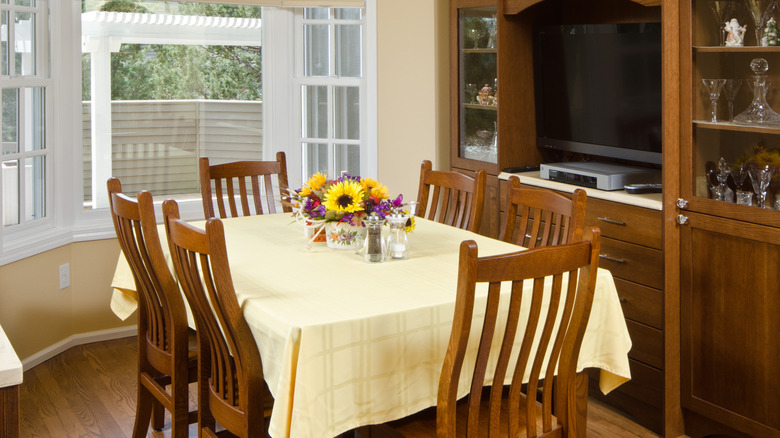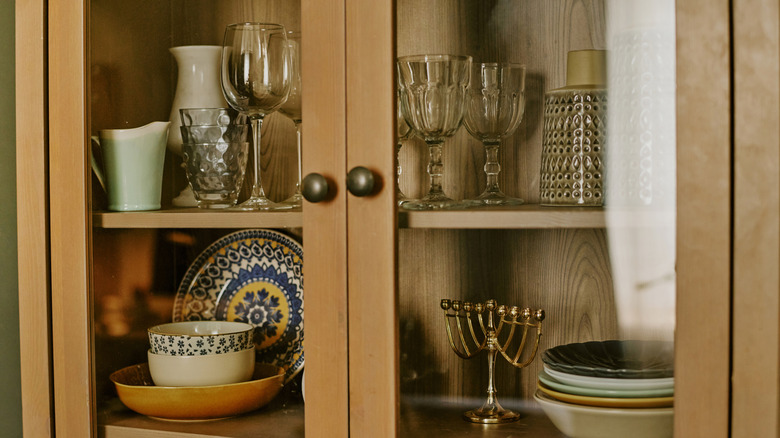This Once-Popular Furniture Graced Every Pre-'90s Dining Room (Or Kitchen)
In today's day and age, china cabinets are something you're more likely to find in your grandma's kitchen or an antique store than a contemporary kitchen. Traditionally used to store and showcase fine dishes, glassware, and other trinkets, their wooden frames and glass doors offered both practicality and sophistication to '90s kitchens and dining rooms. Though out of fashion, their timeless elegance and vintage charm easily earn them a spot on our list of 14 retro kitchen designs that should make a comeback.
The disappearance of china cabinets in modern kitchens can be attributed to changes in aesthetic preferences and functionality. Few people use fine china today, largely due to a declining interest in formal dining and the fact that such items are expensive, fragile, and require special care. Modern consumers can now purchase beautiful kitchenware material like stoneware at a fraction of the price, which are dishwasher-safe and far less prone to breaking. This renders the intended purpose of a china cabinet — to display fine china — largely obsolete for many.
Another reason for their disappearance is the evolution of kitchen design and layout. While undeniably elegant, traditional china cabinets clash with the sleek, minimalist aesthetic of modern "German kitchens," which emphasize clean lines and built-in cabinetry. The visible display of dishes can create visual clutter, and the cabinets' bulky, standalone design makes them impractical, especially in smaller living spaces. Much like common backsplash mistakes, an ill-fitted china cabinet can break the visual harmony of a modern kitchen, making it feel noticeably outdated.
How china cabinets became a kitchen staple
Although they may have fallen out of favor, china cabinets have a long and fascinating history which dates back to the 17th century, when wealthy Europeans began purchasing rare and valuable china imported from East Asia. As these items were a symbol of wealth, they were intended to be seen, so china cabinets were purpose-built to showcase them. Over time, such cabinets became standard features in the homes and dining rooms of the affluent.
Although porcelain was an East Asian innovation, its growing popularity spurred European production, allowing more people to purchase them. By the 19th century, china cabinets had become an accessible and more affordable way for the middle class to display their prized possessions. Over the decades, designs adapted to align with popular trends, with art deco influences emerging in the 1920s and 1930s, while sleeker, mid-century modern versions gained popularity in the 1950s and 1960s.
Given their rich history and ability to adapt to changing trends, there's a strong case that china cabinets could easily fit into modern interiors. Today, you can purchase built-in china cabinets with open shelving that blend seamlessly into the rest of your kitchen cabinetry, which you could use for as general storage, a cocktail bar, or even as a pantry extension. Also, not all kitchens and tastes are the same, and sometimes an unfitted kitchen might be perfect for your space. Just take a country-farmhouse kitchen as inspiration, where a vintage standalone china cabinet painted an off-white or baby-blue could be the finishing touch to a cozy, rustic vibe.


